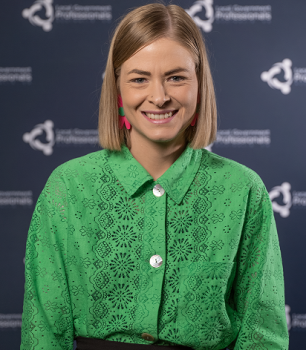While local government in South Australia has largely achieved gender parity, a report shows women are disproportionately represented in part-time roles.
“The make-up of the workforce is pretty much 50/50 male and female. But as we delve into the levels of employment, we see that women are over-represented in the part-time and casual workforce,” said Rhiannon Clarke, chief executive officer at Local Government Professionals SA – a not-for-profit, member-based association representing people working for the state’s 68 councils.
Clarke spoke to GN following the release of a report – Workforce and gender equality in South Australian local government, a project undertaken by LG Professionals SA and supported by the Local Government Association of South Australia.

“This data gives us a valuable insight into what councils are doing well and the areas where there is work to do to close gaps and support gender equality outcomes,” LGASA president Heather Holmes-Ross said.
“There are still gaps in senior leadership, employment types and pay levels when comparing men and women working in councils, which requires further consideration and discussion about how this could be improved,” Holmes-Ross added.
The report offers some key findings. Among them, further action in local government is needed to address barriers to equal participation in the workforce. “Flexible work policies can really help support equal participation and reduce those barriers,” Clarke said.
She told GN there are many systemic drivers of gender inequality in local government. “These can include policies, procedures and beliefs which result – usually unintentionally – in gender inequality.”

Greater awareness is needed to identify ways of thinking and working that can contribute to gender inequality, Clarke said. “Once people are aware of the impact, they can look at how changes can be made for better outcomes. Through reviewing policies, procedures and practices in local government the sector can help equal participation, creating a more diverse and inclusive workforce.”
The report also identifies an inherent gender pay gap in SA local government. But as Clarke told GN, it’s important to note that gender pay gaps aren’t just salary focused. “It includes things like parental leave, superannuation, fulltime versus part-time work, flexible work options – there are a range of different contributing factors.”
LG Professionals SA is calling for a lead agency to monitor, collect, analyse, and report local government workforce data by gender. Currently, such data is not readily available to the sector to enable tracking of workforce gender trends.

The report makes a number of recommendations to local government – “at the sector level and also the individual level” – to address gender inequality in the workforce:
- review whether work is being remunerated fairly and appropriately
- review policies and recruitment strategies for unconscious bias which may be contributing to the disparate gender and employment status profile
- address barriers to female participation which may include inflexible work arrangements, work conditions or cultures that are not gender inclusive
- dig deeper into organisational employment data to gain a picture of what the combination of part-time work and employment at lower levels looks like
- evaluate whether the incidence of part-time and casual work is necessary or is due to historical and traditional ways of looking at work
- work with industry peak bodies, educational institutions, STEM and recruitment agencies to encourage more women to seek careers in local government
- commit to developing diverse and gender equal composition at senior leadership levels.
LG Professionals SA is supporting the sector through the formation of a gender equity working group, which includes senior staff from the local government sector. “This is a volunteer group that aims to drive real and lasting change by identifying equity principles and actions and also align local government efforts with the strategic direction of the federal and state governments,” Clarke said.
As the report acknowledges, since 2000, SA’s local government sector has worked towards achieving gender equity across the workforce and, since that time, many achievements have been made. Clarke told GN the gender equity group intends “to showcase and share learnings in this space about the amazing work councils are doing to address gender equality”.




Leave a Reply